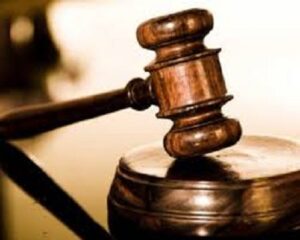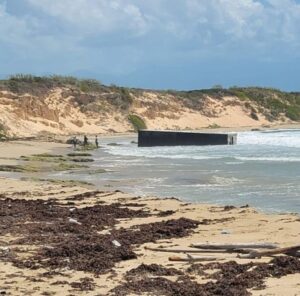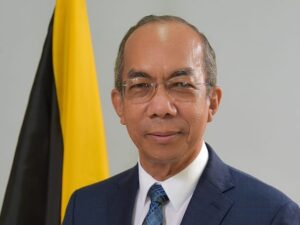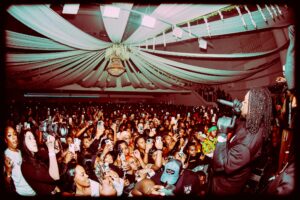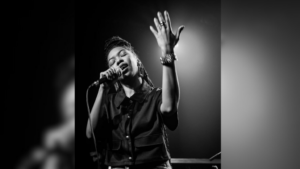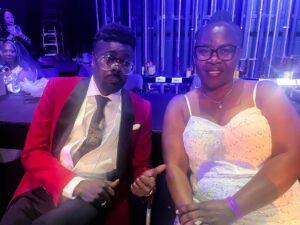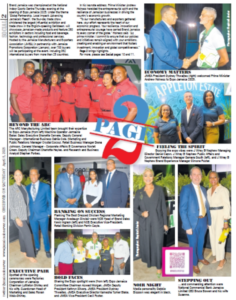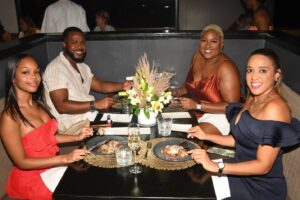
Robert Lightbourne: ‘Made the weather’
It is the norm to affix the achievements, or lack thereof, of an Administration to the prime minister. Indeed in our Western liberal democratic model the prime minister is primus inter pares (the first among equals). It is only right, therefore, that the buck stops with him or her.
However, I believe there are two post-Independence politicians who, although they did not rise to the highest elected office in our land, effectively, if not almost single-handedly, set the agenda for the politics of their day — even more so than the then sitting prime minister.
The late Robert Charles Lightbourne, an outstanding industry and trade minister in the 1950s, is one of the two. I think even the harshest critics (and yes, he did have several) of Lightbourne would find it extremely difficult to downgrade the fact the he was an exceptionally gifted individual and a tremendously effectively politician. His immensely positive impact on the development of this country is still evident throughout Jamaica.
EARLY TO MID-YEARS
Robert Charles Lightbourne was born on November 29, 1909 at Mountpelier in St Thomas to planter and politician Robert Augustus Lightbourne (1873-1939) and his wife, Isabel Adelaide Bogle (1888-1959). Accounts of his early life agree that he was fond of music. Lightbourne it is said had a natural aptitude for the piano. His innate talent was honed by private tutelage and some accounts of Lightbourne’s early life suggest that his parents toyed with the idea of young Bob, as he was affectionately known, becoming a famed concert pianist.
He did very well in exams of the Royal Academy of Music, but his good performance did not propel him into the elite company of renowned pianists like Glen Gould and Robert Schumann. Fate had different plans for young Bob.
He attended Jamaica College and, thereafter, Bishop’s Stortford College in England. The school’s website notes that: “Bishop’s Stortford College was founded in 1868 by a group of prominent Nonconformists (that is those belonging to protestant churches independent of the Church of England) in East Anglia who wanted to establish a public school “in which Evangelical Nonconformists might secure for their boys an effective and Christian education on terms that should not be beyond the reach of the middle class generally.”
An insightful article in The Gleaner of July 17, 2022, noted: “In April 1930, The Gleaner records that Robert C Lightbourne returned from England, where he was studying law, with his wife, Elsie L Lightbourne, and his mother, Isabel.”
He and Elsie would have two sons. And that, “From 1930-1938 Lightbourne resided in St Thomas, where he was chairman of Happy Grove School, a justice of the peace, and served, like his father, on the parochial board (the parish council).”
Lightbourne, like his father, cared for people, especially the less fortunate. He developed a reputation as a man who shared his reservoir of knowledge and who was happy to engage anyone who had a good idea for Jamaica’s development.
He returned to England in 1938. It is important that we remember not to forget that Lightbourne succeeded in England in the midst of great racist barriers. He was chairman of Juney Iron and Steel Co, Birmingham, and helped to produce key equipment needed for World War II.
PIONEER OF INDUSTRY
Maybe it was the lure of regionalism and the initial fervour of the West Indies Federation, the widespread infrastructural and related devastation caused by Hurricane Charlie which landed on our shores on August 17, 1951, a personal invitation to come back home from Sir Alexander Bustamante, founder and at the time leader of the Jamaica Labour Party (JLP), or a combination of all these factors which convinced Lightbourne to return to Jamaica in 1950.
His years of community service in St Thomas and neighbouring parishes, and his earned reputation for inventiveness, creativity, and a willingness to engage on all matters of national development qualified him as political gold dust to all rungs of the People’s National Party (PNP), and the JLP, who were anxious to recruit talent. Bustamante wasted no time and Lightbourne was made head of the Industrial Development Corporation. His immediate remit was to help build back Jamaica stronger after the destruction of Hurricane Charlie. Bustamante gave Lightbourne responsibilities roughly equivalent to the functions of what we know today as the Ministry of Economic Growth and Job Creation of the ruling Andrew Holness-led Administration. Lightbourne excelled at his assignment.
A percipient piece in the Jamaica Observer of December 29, 2010 noted that, “In 1959 he became minister of trade and industry. The story emerged — it was one of jobs, attracting foreign investments, developing viable enterprises — especially areas in food technology application, and how ‘Made in Jamaica’ became a part of our national life and helped to create a new page in our history. He made a valuable contribution to international negotiations, especially his hallmark role in the 1968 World Conference on Sugar. The idea behind his thinking was ‘that the Jamaican entrepreneur had a mercantile background and was not equipped by experience or background in industrial development’.”
The mentioned article also noted that, “He established several factories in Yallahs, one telephone assembling plant, and a few agricultural plants out of his food technology division. Serge Island Sugar Factory, one of the two sugar factories in St Thomas, and one of the largest employers, was about to close down. Lightbourne saved the moment with the GoodYear Tyre Factory. This industrial site became a new and major employer for people in and out of the parish. This pragmatic and progressive approach to politics had its educational component. He provided scholarships for students to go abroad to study to become engineers. He was increasing our stock of workers in engineering to take the level of what some call ‘screwdriver’ industries to a higher level.”
Lightbourne adopted a long view of industrial development. In the 50s and 60s Jamaica had dozens of factories representing some of the biggest global brands. Jamaica was at her peak of industrial development in the 1950s, 60s, and the very early 1970s. This is before Michael Manley and democratic socialism crashed everything. The result: Dozens of factories permanently pull down shutters in Jamaica. Some relocated to the Dominican Republic, Belize, Trinidad and Tobago, along with numerous countries in Latin America and elsewhere.
Thousands of Jamaicans were employed in industries that supplied raw materials to these factories. Better did not come, under Manley, worst did. In previous columns I presented copious evidence to show that by the time Manley was booted from office, on October 30, 1980, in a landslide defeat by Edward Seaga and the JLP, our economy was in tatters. Today we are importing hundreds of millions of dollars of products that were made right here in the 50s, 60s, and early 70s.
Manufacturing is yet to recover from the socialism blight of the 70s. We are gung-ho today about the services sector. In my humble view, the idea that we should put most of our economic eggs in mainly one basket is most unwise, given our status as a developing economy. I think we need to revisit the vision for Jamaica of Robert Lightbourne, our foremost industrialist and statesmen.
It is not a stretch to say that he is the Father of the ‘Made in Jamaica’ brand. I remember a radio programme many years ago in which ace journalist, the late Wilmot “Motty” Perkins noted that, while he was The Gleaner’s reporter responsible for industry and trade in the 50s, Jamaica was opening a new factory nearly every week. Perkins recounted that Lightbourne called him and protested that he was not giving adequate coverage to the numerous factories that were being opened. Perkins retorted, “But, Minister, you’re opening a new factory almost every week, it’s hardly news any more.”
Many of the estimated 45,000 black-owned businesses which were destroyed in the 1990s, while former Prime Minister P J Patterson and his Finance Minister Dr Omar Davies were at bat, were started as a consequence of special policy initiatives by Lightbourne.
Jamaica needs to regain her position as the workshop of the Caribbean and Latin America. We must learn crucial lessons from the current supply chain disruptions caused by the novel coronavirus pandemic.
Anyways, by the early 1960s Lightbourne was a household name in Jamaica. He was a genuine rising star in the JLP. Archival material from the National Library of Jamaica noted that, “Lightbourne served under prime ministers Sir Alexander Bustamante, Sir Donald Sangster, and Hugh Shearer.”
He was a four-term Member of Parliament (MP) for St Thomas Western and served as minister of tourism from 1962-1972.
Whether it was due to policy differences, personality clashes, or both — accounts differ — there is ample evidence that there was a falling out between Lightbourne and the leadership of the JLP somewhere between the late 60s and very early 70s. He resigned from the JLP after the 1972 General Election, in which the party suffered a landslide defeat at the hands of Michael Manley. He represented St Thomas Western as an independent and later formed his short-lived United Party. For the most part, third parties in Jamaica have had a very hazy history.
More to the man
Many of our leading political figures have been married multiple times. Some might well argue that if one cannot succeed at holding together something as near and dear as one’s marriage that alone should disqualify one for public office. I do not agree. But that is a discussion for another piece. Anyways, in 1973 Lightbourne married for the third time to Felicity Ann Agnes Boorman. They would have a daughter named Hyacinth.
He was fond of athletics from his time at Jamaica College and, after his retirement from representational politics in the early 1980s, Lightbourne became very active in the Jamaica Amateur Athletics Association and the Jamaica Olympic Association
He invented a grass drying machine, which was demonstrated in Jamaica, and a unit given to the Government.
Robert Charles Lightbourne “made the weather”. The phrase “made the weather” comes from Sir Winston Churchill, former prime minister of Britain. Churchill said of one of his ministers (secretaries as they are called in the UK), Joseph Chamberlain, that he “made the weather” — meaning he established an indelible footprint during his time at the wheel, so much so that politicians who came after him had to use his template and related achievements as a guide.
Chamberlain, a renowned orator and municipal reformer, never became prime minister.
Although Lightbourne never became prime minister, verifiable evidence shows that he left Jamaica in a much better state than he had found it. He, in my humble view, deserves much more in the way of political recognition. Certainly he deserves much more than at least three of our former prime ministers.
Lightbourne is perhaps one of the best prime ministers Jamaica never had.
With respect to national honours, he was invested with the Order of Jamaica for his contribution to Jamaica’s industrial development and his involvement in international sugar agreement negotiations. I think our Order of National Hero should be conferred upon Robert Charles Lightbourne.
He died in Kingston in December 1995, aged 86.
I will examine the contributions of the second elected politician who did not become prime minister but set the agenda or “made the weather” in a forthcoming piece.
Garfield Higgins is an educator, journalist and a senior advisor to the minister of education & youth. Send comments to the Jamaica Observer or higgins160@yahoo.com.


